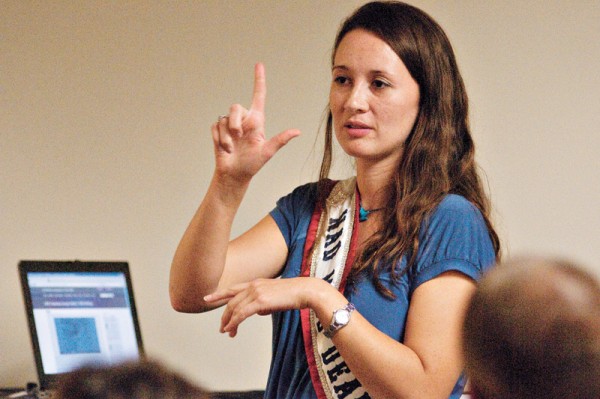As Both a Student and Teacher, Miss Deaf America Works to Dispel Stereotypes
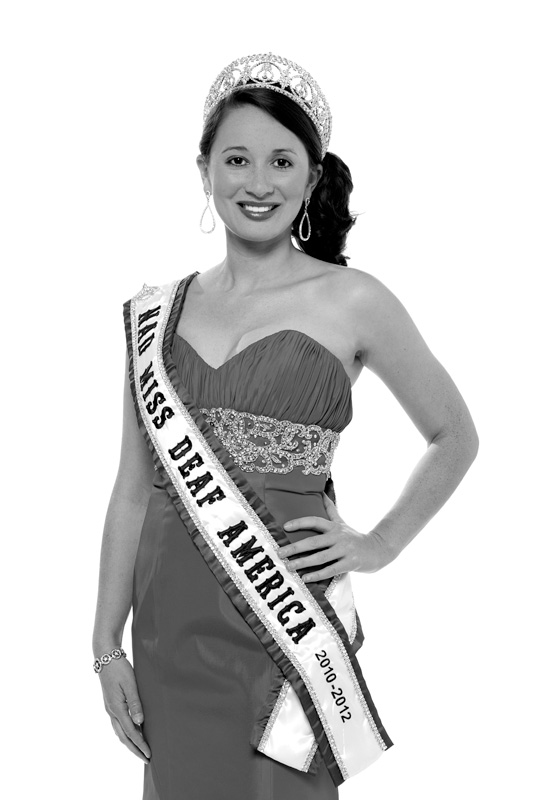
Rachel Mazique, 2010-2012 Miss Deaf America Ambassador, is passionate about disrupting stereotypical beliefs about what Deaf people can achieve.
The UT alumna and doctoral student travels the country to promote the National Association of the Deaf (NAD) and its youth programs. She also gives presentations on leadership, advocacy and education, appears as a motivational speaker, and recently performed the National Anthem in American Sign Language during Super Bowl XLVI.
Mazique graduated from Gallaudet University in 2008 with Bachelor of Arts degrees in English and education. She completed her Master of Arts in English at The University of Texas at Austin in 2010, where she is a doctoral student in the English Department and an assistant instructor in freshman rhetoric and writing. Her research interests include Deaf literature, women and gender studies, ethnic literature and disability studies.
What is the state of Deaf education programs in the United States?
Deaf education programs have improved as they have moved to a bilingual-bicultural focus rather than requiring an either/or position of ASL (American Sign Language) versus English, or of signed language versus spoken languages. Deaf students, as visual people, have greater access to language in a visual means. However, they are also expected to know English, which they should acquire through instruction in ASL and written English, with speech therapy as a supplement, not as a substitute for educational content and language learning and development.
How are Deaf programs continuing to improve?
Deaf programs are continuing to improve as the value of truly bilingual and bicultural programs becomes more widely understood. English literature and literacy has long been a focus of Deaf education. In a bilingual, bicultural program, ASL literature and literacy becomes equally important and also encourages development in digital literacy, as the publication medium for ASL is film. Hence, these programs are ideal in our current digitized world and proliferate with new media.
Do you see a conflict between ASL and English? How do you respond to the critics’ claims that Deaf children and young adults have poor vocabularies and little understanding of English grammar as a result of their ASL preference?
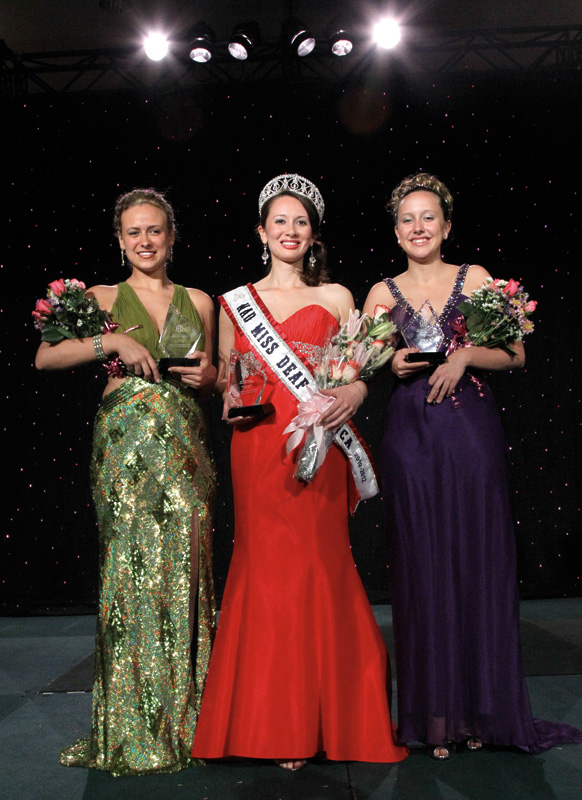
I do not see a conflict between ASL and English. In a bilingual, bicultural educational environment, students learn to communicate in both languages and develop fluency in both. They learn to shift from one to the other and learn the differences in the grammatical and syntactical structure. I am a staunch proponent of encouraging Deaf children to learn written English as early as possible. This acquisition of written English will happen most efficiently when children first acquire a native, natural “oral” language. Children learn language naturally through simple immersion, or access to a language-rich environment; children also need an oral language for communicative purposes before they may learn how to read and write. Since spoken English cannot be native or natural, but a trained and acquired language, ASL, another “oral” (though visual) language, provides the window to then learn how to read and write.
As studies of second language acquisition, as well as my own experience have shown, learning a second language is possible and most efficient when a native language has already been acquired. I believe I am well educated and bilingual and bicultural because I first acquired language naturally, from my parents, in a language-rich environment. This environment, fortunately for me, was a Deaf environment as my older brother and parents are also Deaf. Thus, my first language was ASL.
I was signing and communicating with my parents by the age of two. I was also attracted to visual print language and learned to associate English print to the signs that my mom told me each word was associated with. I was then one of the most advanced readers in my kindergarten class. I learned to speak through speech therapy starting around the age of four and was speaking by the age of five. I continued speech therapy until the age of nine. I did not like leaving my classes and missing the regular lessons to practice speech. I did not have to continue taking speech therapy after the age of nine, and I focused on my studies instead. However, because I also had substantial hearing when I was younger, I was able to train my speech more easily than most. Today, I value ASL and written English much more highly than I do my spoken English. Too much focus on speech and spoken language — to the extent of privileging it over signed language — is phonocentric, and I am opposed to anything that smacks of phonocentrism or audism.
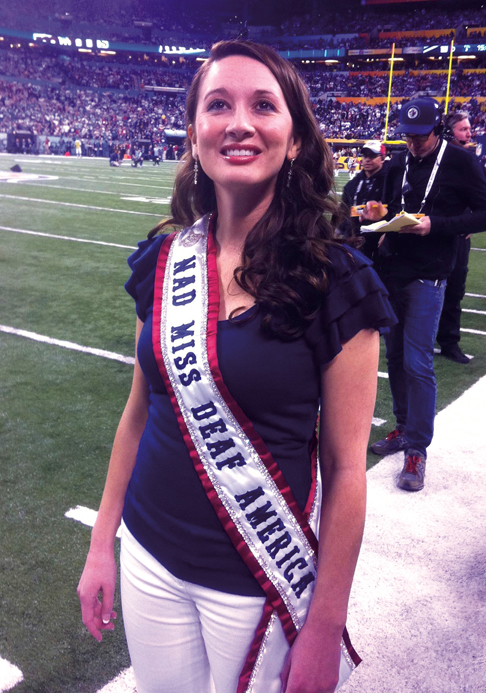
I ask [critics] to look at the state of Deaf education [the struggle of oralists versus manualists], and ask those Deaf adults who have not acquired fluency in English when they learned to sign. Most Deaf adults who are fluent in English had access to ASL from birth or from a very young age — before the window to language acquisition closed. Or, they are hard of hearing and had enough hearing to “get by” on whatever English they could pick up. Most Deaf adults who struggle with English proficiency did not have access to an accessible language from birth; these adults are often the “failures” of the oral schools — those who were denied sign language until their educators and parents realized they would not be able to pick up spoken English to the level of proficiency of their hearing peers. These Deaf adults are also the ones who lacked instruction in written English and literature because so much emphasis was placed on the tongue, mouth, and oral production and “learning” to hear rather than on learning to become critical readers, writers and thinkers.
Your Miss Deaf America platform, “Sign Language Literacy,” was about being literate in various sign languages with an emphasis on the plurality of signed languages around the world. Why is it important for people who sign to also learn sign languages from other countries?
The Deaf community is a transnational one. By recognizing our global interrelationships, we become a stronger, more cohesive cultural group. When I sat in a Deaf History and Philosophy course taught in Bristol, England (through British Sign Language), Dr. Paddy Ladd, who wrote “Understanding Deaf Culture: In Search of Deafhood,” suggested the possibility of exploring the concept of an international “Deafhood” by examining various nations for traits or cultural elements that link signing Deaf people from multiple nations. A major element, or trait, is most likely a linguistic one.
We are all encouraged or required to learn a foreign language at some point during our educational careers; Deaf students would benefit greatly, as I have, by studying foreign sign languages. Just as Deaf children need ASL to learn written English, it makes more sense for Deaf children to learn foreign written languages along with their living oral language — that is, their signed language — rather than opting out or never quite mastering the spoken oral language that cannot be heard. The ideal would be to see Deaf students learning to read and write foreign languages while also learning that country’s signed language. Instructors who teach written Spanish in Spanish Sign Language (LSE) align perfectly with instructors who teach hearing students written Spanish in spoken Spanish. It makes less sense to teach written Spanish in ASL, but that is the current practice. I would love to see courses that involve Deaf native signers of other languages demonstrating the sign from their country as students learn the written equivalent.
After completing your double major at Gallaudet University, known as a world leader in liberal arts education and career development for Deaf and hard-of-hearing students, how was your transition to UT?
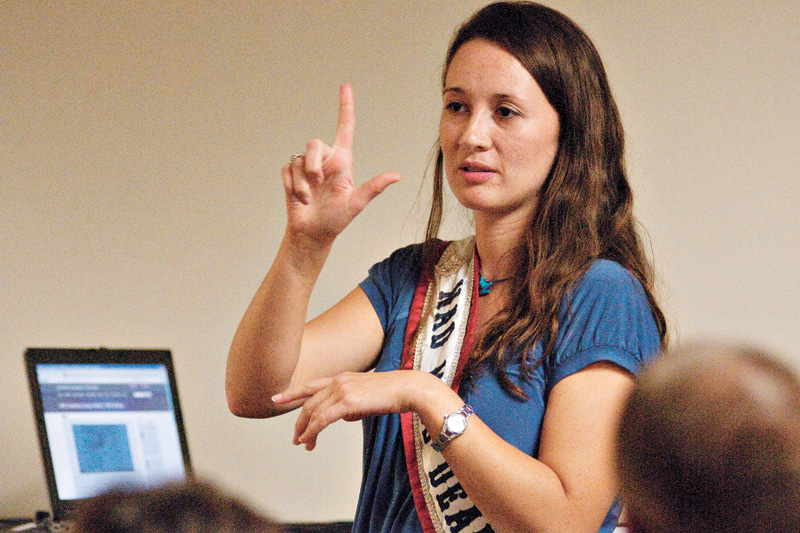
My first year presented the most difficulties in terms of transitions, but the difficulty was not just the transition from a Deaf-friendly environment to a mainstream environment. I was also transitioning from a small liberal arts education to a large, Tier-One research university, the world of graduate school with all its accompanying expectations, and the different educational climate of a program focused on professional development — all while also leading my first university-level classes as a teaching assistant in American and British Literature. In my three years at Gallaudet, I did become used to having full access everywhere I went, so it was difficult at first to remember to request interpreters in advance and to have to repeatedly explain to professors and classmates and students how to work with a Deaf student, colleague or teacher. After the first year, however, I learned how to be more proactive and arranged meetings with my professors in advance of the first class meeting. I also learned that if I took one position with my students, they would quickly adapt to the different communication environment.
Why did you shift your focus from Chicano literature to Deaf and disability literature?
At UT, as I learned more about the literature, culture, history and civil rights movements of Chicanos, I found myself continually making mental comparisons to Deaf literature, culture, history and the Deaf civil rights movement that no one seems to talk about.
I realized that Deaf literature should be studied as another focus in multicultural literature courses. I’m also interested in the social model of disability theory — one that sees disability in the environment — not in the body. Stigmas arise from social discrimination and environmental barriers. Disability is a social construction that becomes associated with certain bodily differences. I’m interested in the intersections between disability theory and the disability rights movement as it contests and, at times, agrees with those made in Deaf studies.
In addition to your studies as a graduate student, you have also designed a new course in the Rhetoric and Writing Department. How will the class benefit undergraduates?
I designed “Disability in Pop Culture,” in which students analyze the relationship between pop culture and rhetoric. Their analyses will examine public disagreements about various issues. For example, I ask them: How and to what extent do popular (mis)representations of the supercrip [a stereotype in which a disabled person is portrayed as a hero], convince us to make political decisions regarding accessibility, advocacy, education and/or social policy? How can we evaluate arguments that not only depict people with disabilities as heroic but also those who portray them as deserving of pity and help? The course is primarily a rhetoric and writing course, so students will improve writing, analytical and critical thinking skills. However, rhetoric also involves civic engagement and civic literacy skills, so undergraduates will benefit as they analyze the rhetoric of terminology to understand how word choice matters.
